LOCK 2,4,6
Kunsthaus-Bregenz | Austria
Oct. 24 - Jan. 17, 2010
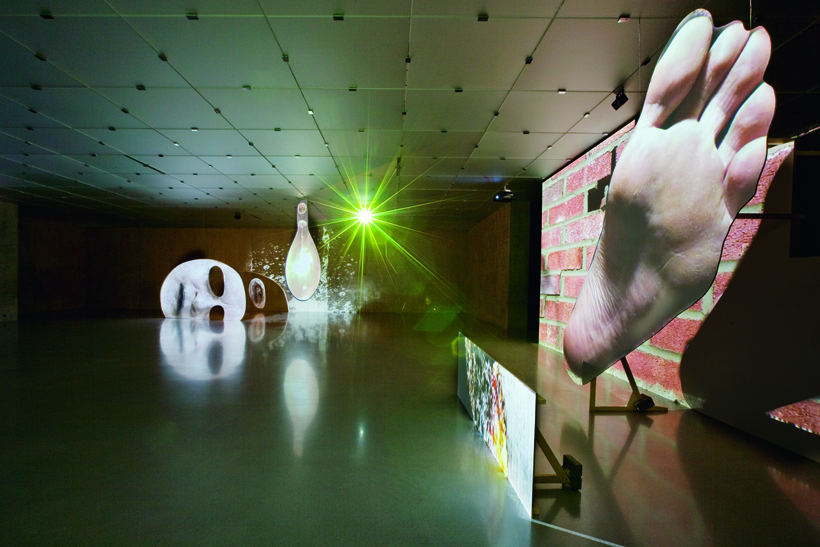
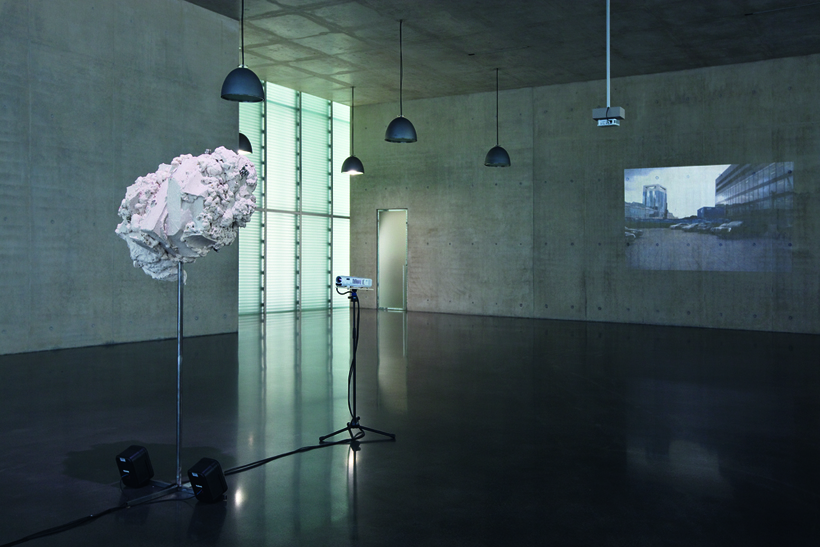
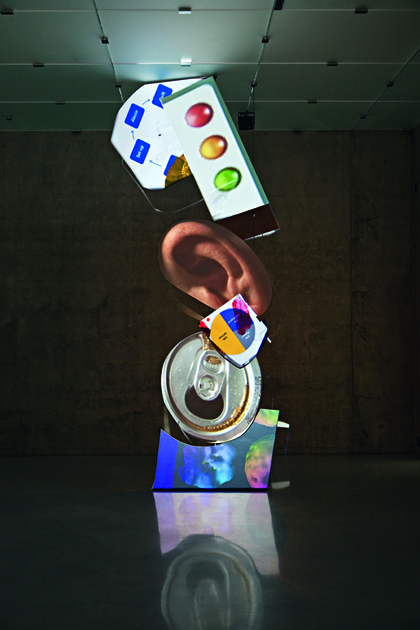
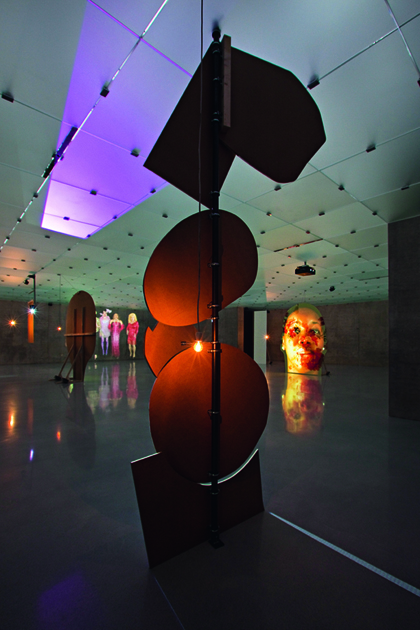

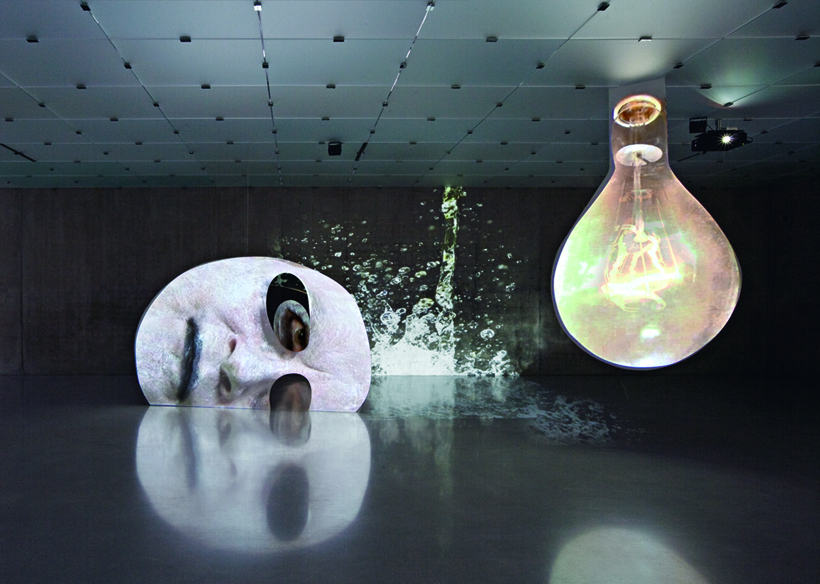
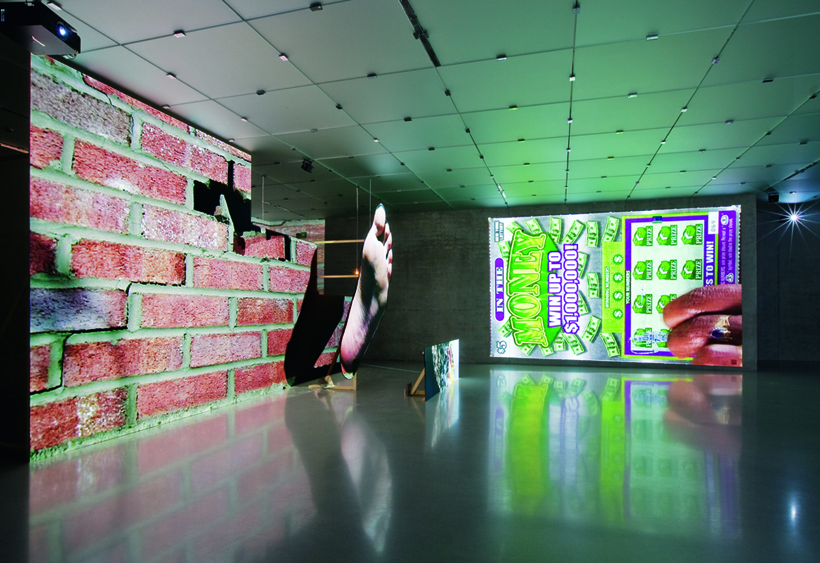
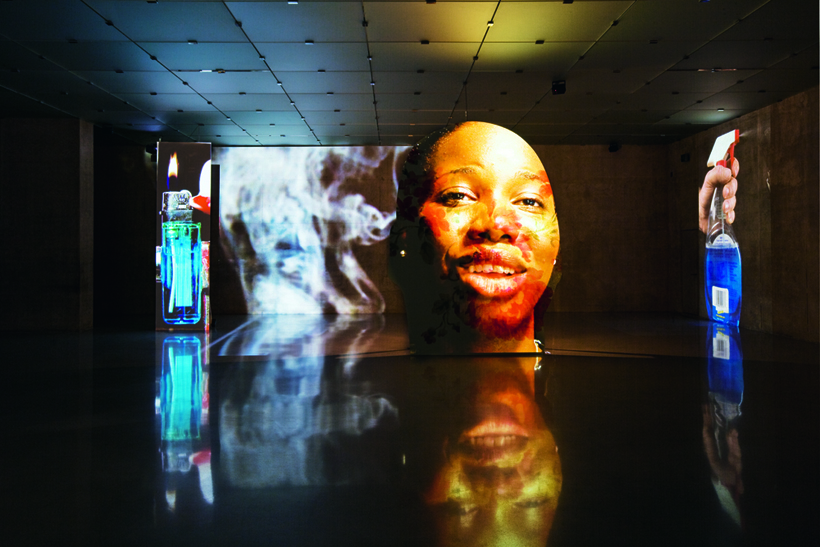


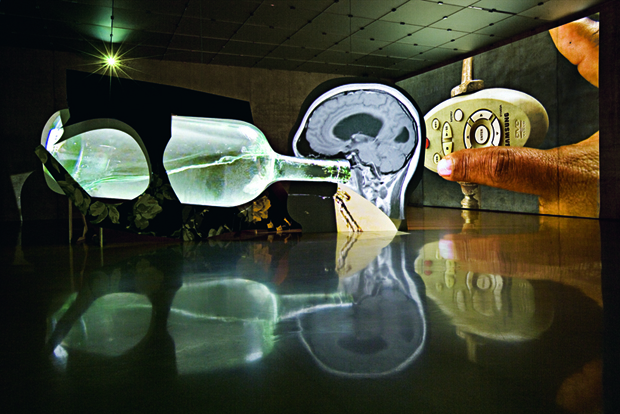
LOCK 2,4,6 was developed over a number of years in conjunction with Eckhardt Schneider and the Kunsthaus Bregenz. The installation was in part inspired by Peter Zumthor's provocative architecture. Oursler converted the entire building into a meta-installation, using synchronized projections, supergraphics and shaped flat panels to form a maze through which participants navigate.
The title of the exhibition is derived from the psychologist Peter Wason's study on hypothesis testing. He challenged subjects to analyze the number sequence 2, 4, 6 and to produce a rule that fits the sequence. His subjects came up with many theories but very few worked out the simple, correct solution of ascending numbers. His results are important in the study of confirmation bias or how we tend to skew the facts of our world through the filter of our own preconceptions. The work opens a discourse on the bias implicit within one's personal perspective, questioning the relationships between thought and action, biology and belief, fear, strength and vulnerability. Oursler takes an intuitive approach to the mind-body problem, linking three systems roughly defined as mind, body and the unknown. Each occupies a floor of the building: the top floor is pervaded by consciousness and remote control; the second floor is dominated by physical or haptic control; and the first floor is under the influence of compulsive risk-taking and chance-stochastic, out of control. A struggle between volition and fate plays out across these zones as the viewer is asked to question his or her position in this scenario.
The installation is designed to capture an epistemological, social, anatomical and linguistic feedback process that connects the interrelated systems. Soliloquies and ritual performances are captured in video and projected onto an array of set-like screens. The overall effect is a labyrinth of uncanny processes that seek an impossible balance among competing drives, compulsions and substances in a never-ending struggle to arrive at homeostasis. Viewers become part of the art and the analytical process by moving from element to element, tracing the flow of cause and effect through the various floors.
On the third floor, viewers are confronted with the first of three choruses-one of virtual, human- scale women-and are asked to position themselves in relation to a series of questions and poetic proclamations. These performances combine with others to humorously reflect varying approaches to categorizing consciousness from Freud to functional MRI technology. Oursler collaborated with Dan Lloyd, Brownell Professor of Philosophy at Trinity College, Hartford, Connecticut, to generate musical compositions based on functional MRI readouts of psychological test subjects. The composition is a real-time auditory and visual unfolding of synapses being activated in the brain. Here Oursler depicts consciousness as a head perpetually drenched in slime, surrounded by undifferentiated, meandering systems of juxtaposed images, actions, language, electronic devices, neurological diagrams, masks, wallpaper, and a bottle perpetually draining down through each floor of the installation, splattering onto the first floor.
On the second floor, viewers are heckled by the Unwanted Thought Chorus comprised of colorful drag queens emphasizing the mutability of identity as they sing, "You never had a good image of yourself." A monolithic female singer inquires in a lilting tone, "Who turned off the lights?" This comical, nagging thought may be easily dismissed by most, yet provides the viewer with access to the obsessive mind-the one person in fifty who returns to the room and must repeatedly turn the lights on and off. A stocking-masked criminal peeks from behind a large rotating bouquet of flowers, as a cigarette lighter sparks rhythmically.
The first floor is characterized by chaos. Here the systems break down and gravity comes into play. Liquid pours from above, resulting in a violent splattering fountain of randomness. In stark contrast to the disturbing subject matter and the landscape of low-level addictions, a group of innocent-looking children confront the viewer with a chorus of screams. A large mask-like, ghoulish head attempts to mathematically define randomness, to describe and transcend entropy. A giant cigarette rapidly burns down and reverses, its smoke passing through each floor to collect on the ceiling of the building. In an attempt to beat the odds, giant lotto scratch cards endlessly reveal their losing combinations. A virtual wall is built brick by brick-a projected documentation of a mason's meticulous work that is subsequently smashed by a sledgehammer, only for the building to begin all over again.
Other versions of the work have been produced in a linear structure and exhibited numerous times since Kunsthaus Bregenz in 2009, most recently in 2013 at Pinchuk Art Centre in Kiev, Ukraine.